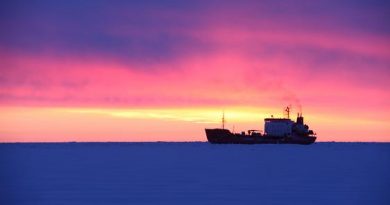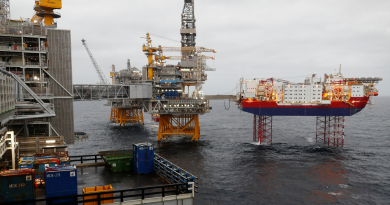Blog: As Yamal LNG launches in Arctic, both Russia and China try to claim success
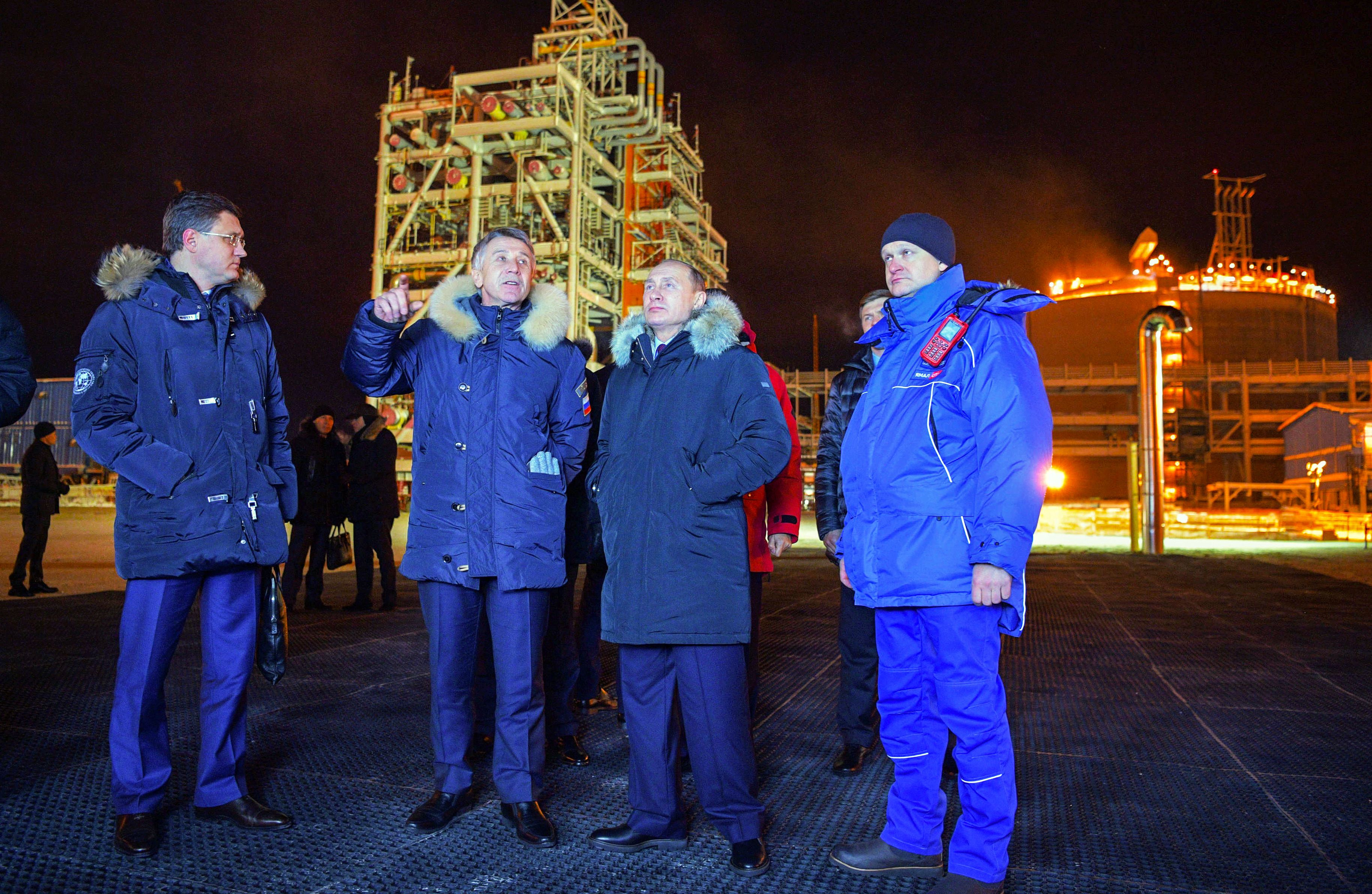
Last Friday, Russian President Vladimir Putin descended on the frigid Yamal Peninsula to participate in the opening ceremony for a major Arctic liquefied natural gas (LNG) project at the booming port town of Sabetta. Just a few years ago, hardly anybody lived at this remote outpost on the peninsula, a thumb of land sticking out from Siberia criss-crossed by reindeer herders and pipelines.
Now, 30,000 employees, mostly shift workers imported from southern and central Russia, have helped to construct the biggest LNG project north of the Arctic Circle.
Ship made in Korea
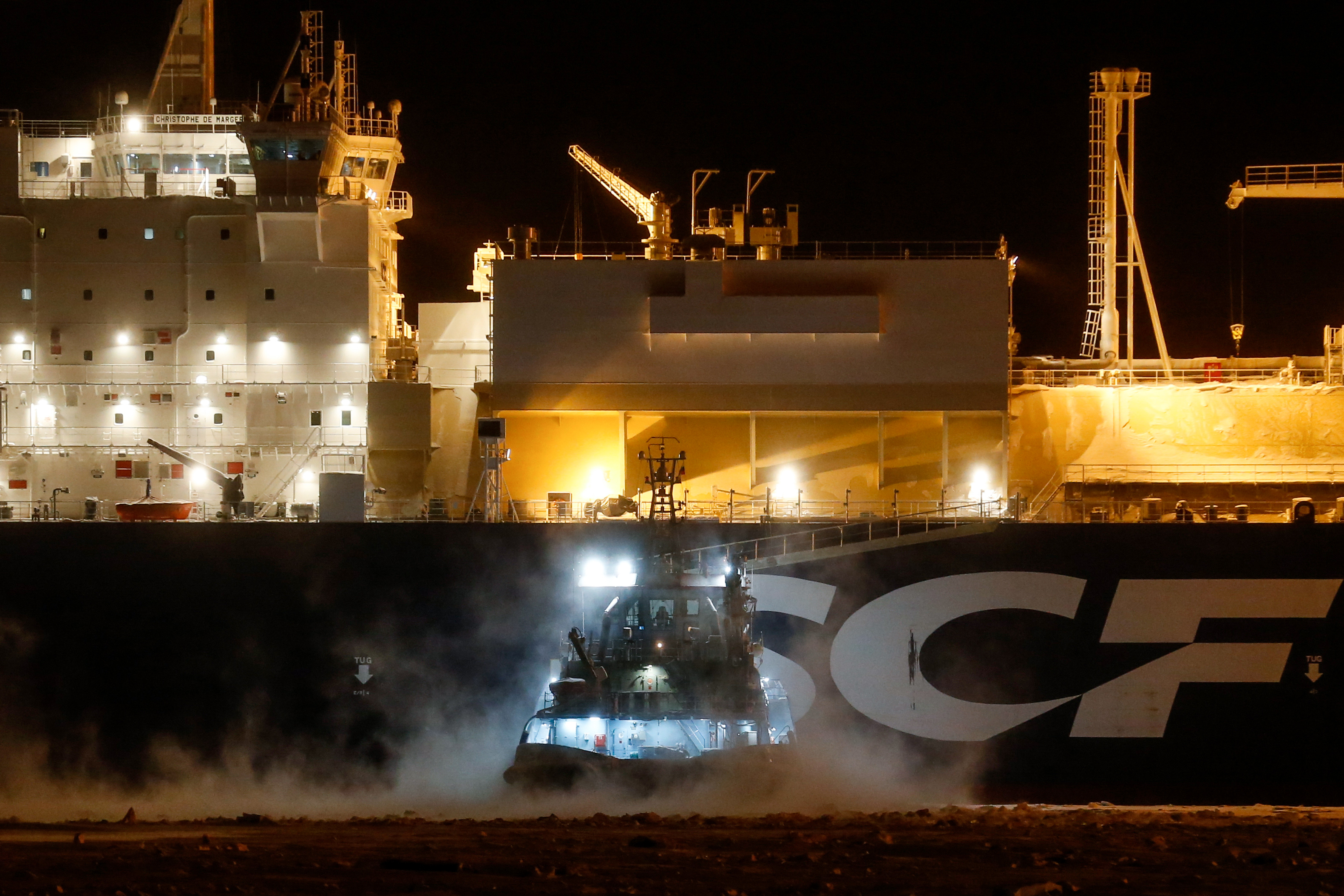
At Putin’s command, gas began pumping into an 80,000-ton ship sitting offshore. While his push of a button sought to symbolize his clear and effortless control over Yamal, the Russian Arctic, and the country at large, the network of actors involved in making the project a success runs far and wide. Even the icebreaking LNG tanker, Christophe de Margerie, was built in Korea. The vessel draws its name from the late CEO of France’s Total, one of the world’s largest oil and gas companies and a key investor in the long-awaited $27 billion Arctic gas project despite US and EU sanctions on Russia’s energy sector. Yamal LNG has a production capacity of 16.5 million tons per year and a total of 208 production wells are slated. Gas is sucked up from underneath the permafrost both on and offshore, making it an extremely technologically challenging endeavor.
“Developing the Arctic and the Northern Sea Route”
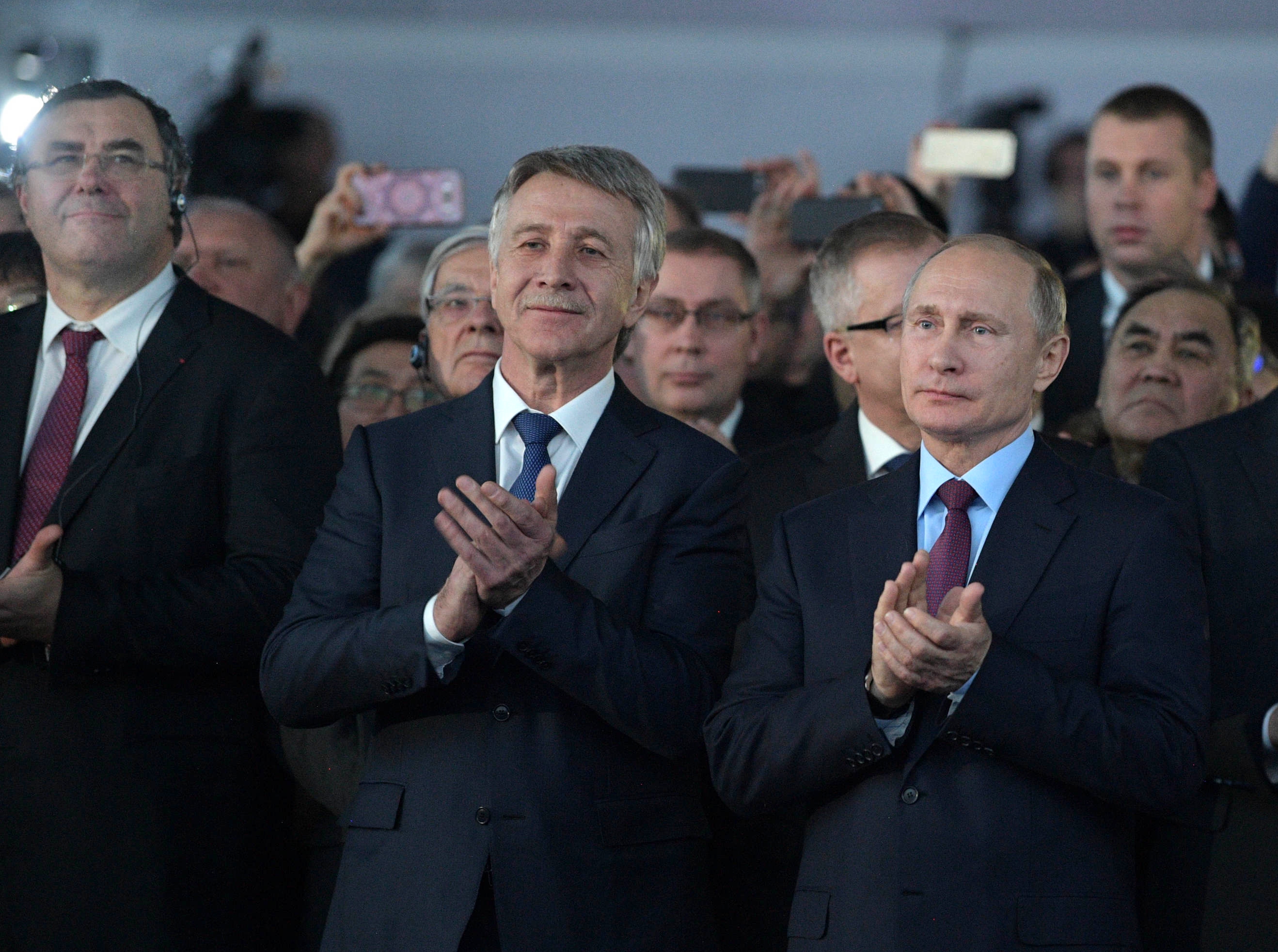
In Sabetta, Putin gave a speech in which he declared about LNG, “This is an extremely important sector for Russia. This is not just an important event in our country’s energy sector, or gas production and liquefaction. This is a more ambitious project. What I mean is that we are faced with the enormous task of developing the Arctic and the Northern Sea Route.”
Putin thus inserted Yamal LNG into the longer arc he foresees of the development of the wider Russian Arctic, a region woefully ignored during the 1990s following the disintegration of the Soviet Union. For years now, the Russian president has been pushing the narrative that development of the Arctic will further the development of Russia. In other words, so goes the Arctic, so goes the nation.
Why the Arctic?
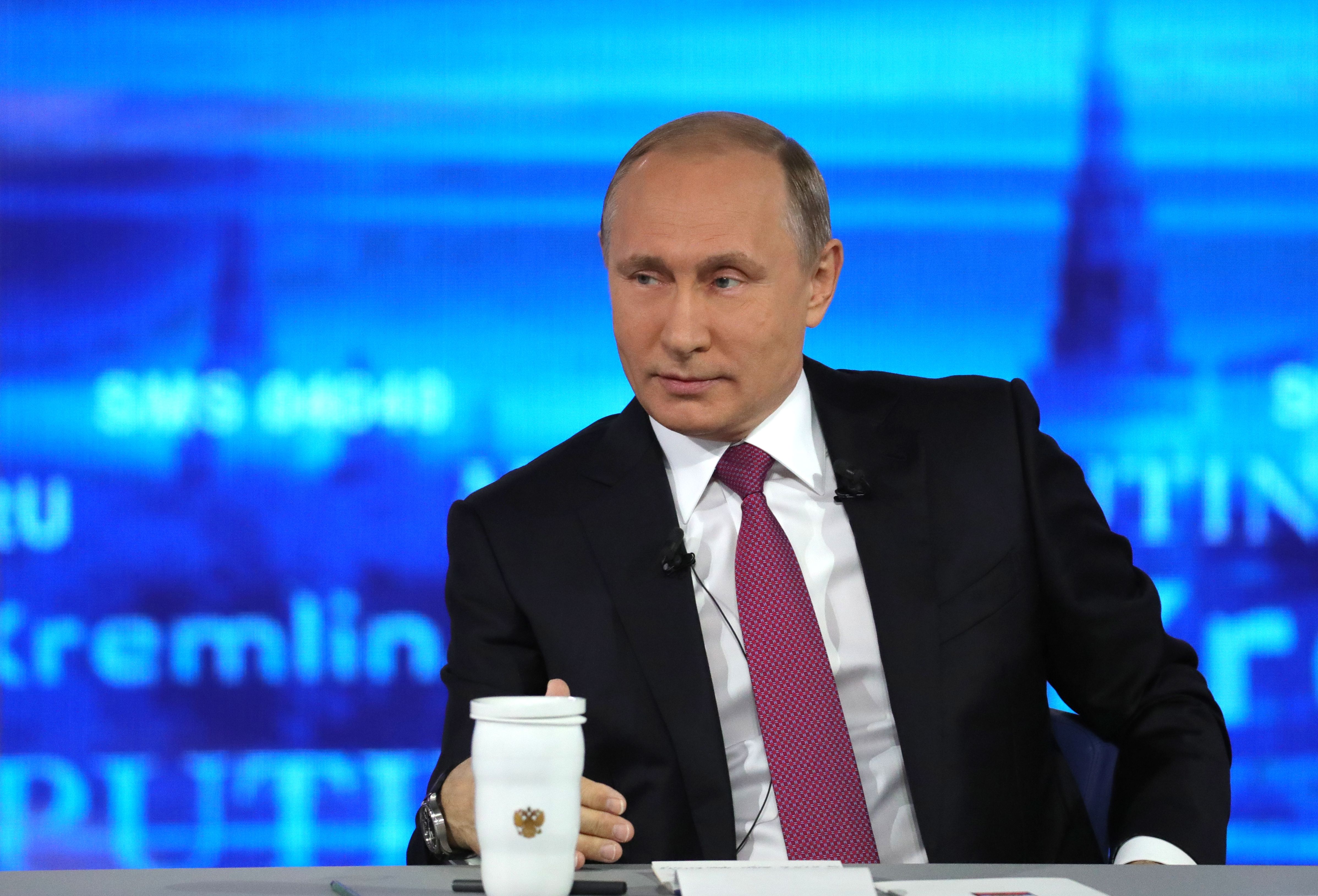
This past June, during the annual “Direct Line with Putin” broadcast that gives Russian citizens a chance to speak with the president by phone, a woman by the name of Tatyana Remezova asked, “Why are we so focused on the Arctic? For the past 20 years, no one spoke about it, and today we see Arctic troops even at the Victory Day parade. A lot of money is spent on the Arctic. Why is this being done?”
Putin responded curtly, “While we are on this subject, what else can I say? I have already started talking about this. The Arctic is an extremely important region, which will ensure the future of our country. Mikhail Lomonosov once famously said that Russia would expand through Siberia. I can say with confidence that Russia’s power and capabilities will expand as we develop the Arctic region.”
Yamal LNG is thus intended to jump start development of the Northern Sea Route. Despite Putin’s Russia-centric frame of reference, however, Yamal LNG would likely not have been a success without crucial French and, notably, Chinese assistance.
To go north, look east
U.S. and European Union sanctions on Russia have made it difficult for energy projects to get the capital they need from the West. Companies like Novatek, the independent company operating Yamal LNG, have instead looked to China, which sees in Russia opportunities for geopolitical and economic gains. Gas-strapped and cash-rich, China has poured money into resource projects and companies in far-flung locations.
Yamal LNG was one of the first three projects financed by the Silk Road Fund. Beijing established the state-owned investment fund to support its ambitious aims with the Belt and Road Initiative, a $1 trillion plan to build infrastructure across Eurasia. The Silk Road Fund loaned Yamal LNG $1 billion in exchange for a nearly 10% stake. Chinese banks loaned Yamal an additional $12 billion, the third biggest corporate deal of its kind in Russian history, according to Reuters. In turn, China National Petroleum Company received a 20% stake in the project.
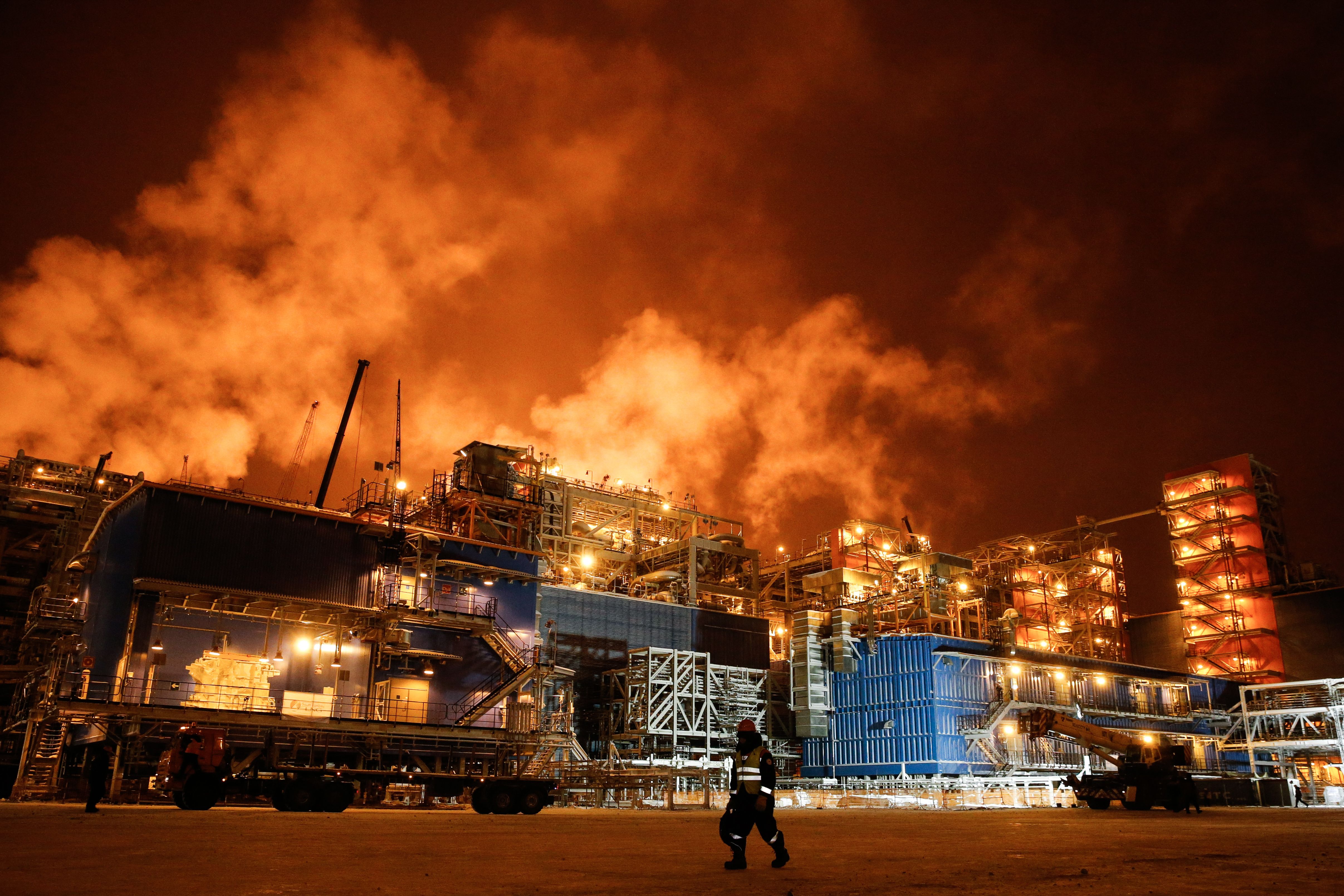
China therefore sees the Yamal LNG project as much a project of its own making as Russia’s. A story from Taiwan’s official outlet, Central News Agency, opened with these two noteworthy sentences: “The Yamal LNG project, jointly developed by China and Russia in the Arctic Circle, has been put into operation recently. Completion of this development in 2019 is expected to help make up for the LNG shortage in China and open up the Arctic waterway for China.” On the mainland, state-run outlet Zhejiang Press Office declared, “Throughout the project’s construction process, China’s advanced engineering capabilities showed most vividly,” while also adding, “The creative work of China’s construction team and builders is remarkable.” The article noted how of the four polar drilling rigs in one of the condensate fields, one was produced in China.
Despite China’s contributions to Yamal’s success, if the government is truly hoping that the Northern Sea Route will soon become an international shipping lane, alarm bells should be ringing in Beijing. In an interview with a Chinese newspaper, Dong Xiucheng, a professor at the University of International Business and Economics in Beijing observed, “The construction of the Yamal project not only brought natural gas to our country, but also made a new shipping lane.”
Nationalizing oil and gas shipping
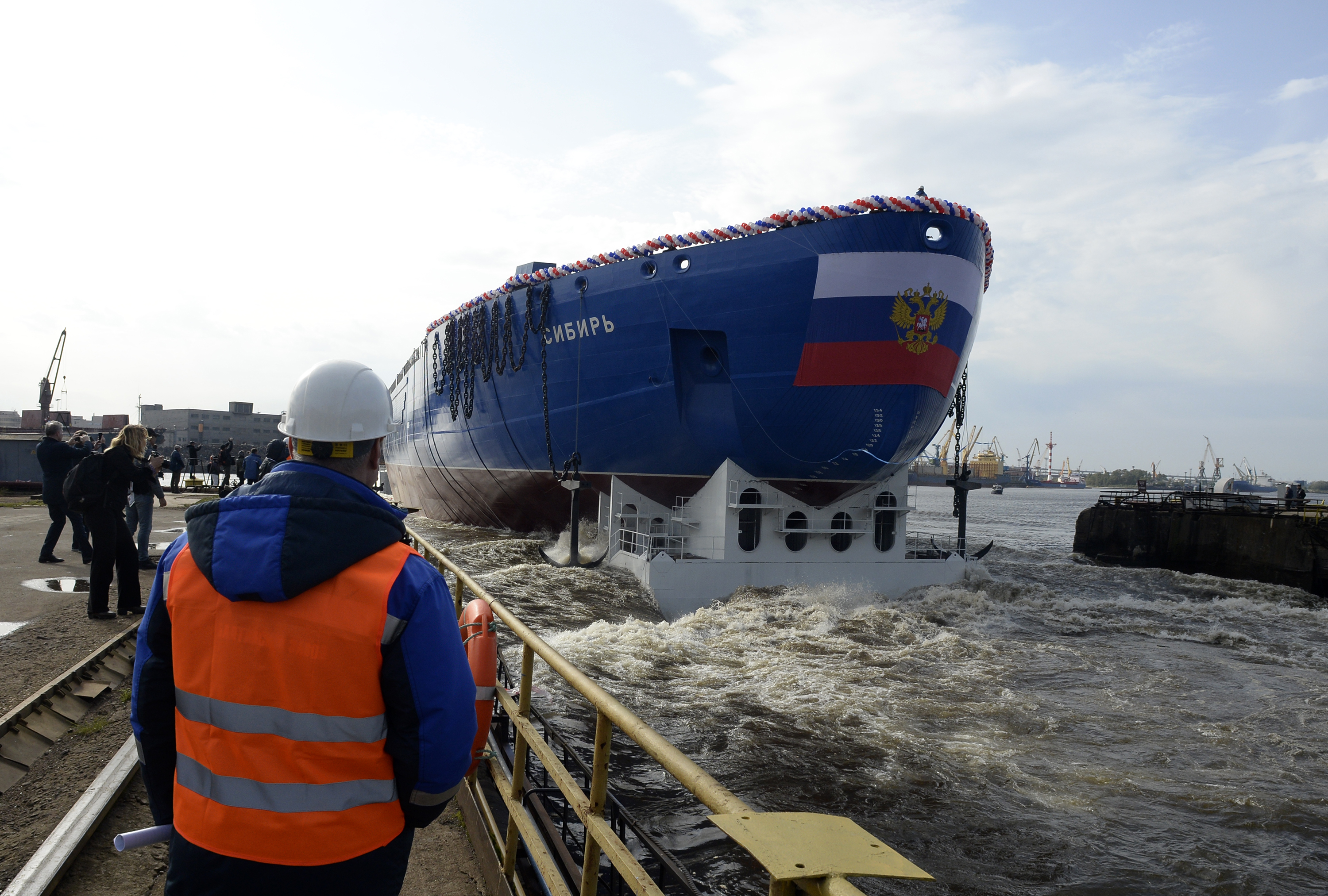
Yet in Sabetta, Putin asserted that success in Yamal “means further development of nuclear shipbuilding.” He also recently gave responsibility for development of the Northern Sea Route to Rosatom, the Russian nuclear regulator, a move that would be somewhat akin to having the U.S. Nuclear Regulatory Commission oversee development of the Alaskan coastline. Finally, and perhaps most worrisomely for China, Putin recently outlined his desire to nationalize oil and gas shipping along the Northern Sea Route, for which the State Duma is currently considering a draft Law. That would mean even Christophe de Margerie would be ineligible to carry LNG from Yamal, as it is a Cyprus- and not Russia-flagged ship.
For the moment, Chinese media seems to be ignoring Russia’s nationalist dreams of transforming the Northern Sea Route. Instead, state-run outlets like Xinhua are trying to bring the Russian Arctic into China’s sphere of maritime influence.
Northern Sea Route or Silk Road on Ice?
Rather than referring to the Northern Sea Route as such, Xinhua said, “This passage through the Arctic Circle is called the ‘Silk Road on Ice.’” When not using this new moniker that points to China’s plans to revive the ancient Silk Road, Chinese officials call the shipping lane the “North-East Passage” rather than the Northern Sea Route, a term which emerged under Soviet rule following the government’s closure of the lane to international shipping. Further underscoring the Arctic shipping lane’s eastern orientation, Xinhua drew attention to the fact that more than 60% of the modules and components for the Yamal project were transported through the Bering Strait – meaning that most of them likely came from Asia. (Chinese discourse also never lacks for colorful metaphors, with another Xinhua article referring to Yamal LNG as “an energy pearl inlaid in the Arctic Circle.”) Another Chinese outlet reported that “Chinese enterprises have contracted 85% of all modules, construction of 7 transport vessels and operation of 14 vessels among 15 LNG carriers.”
Even the ice-class tanker currently transporting 172,000 cubic meters of LNG from Sabetta began its journey in Dalian, China. Prior to its maiden voyage transporting LNG, Christophe de Margerie was built in Daewoo’s South Korean shipyards. The company is tasked with building 14 other identical tankers worth a total $4.7 billion to ply the route between Sabetta and ports east and west.
Oil going East
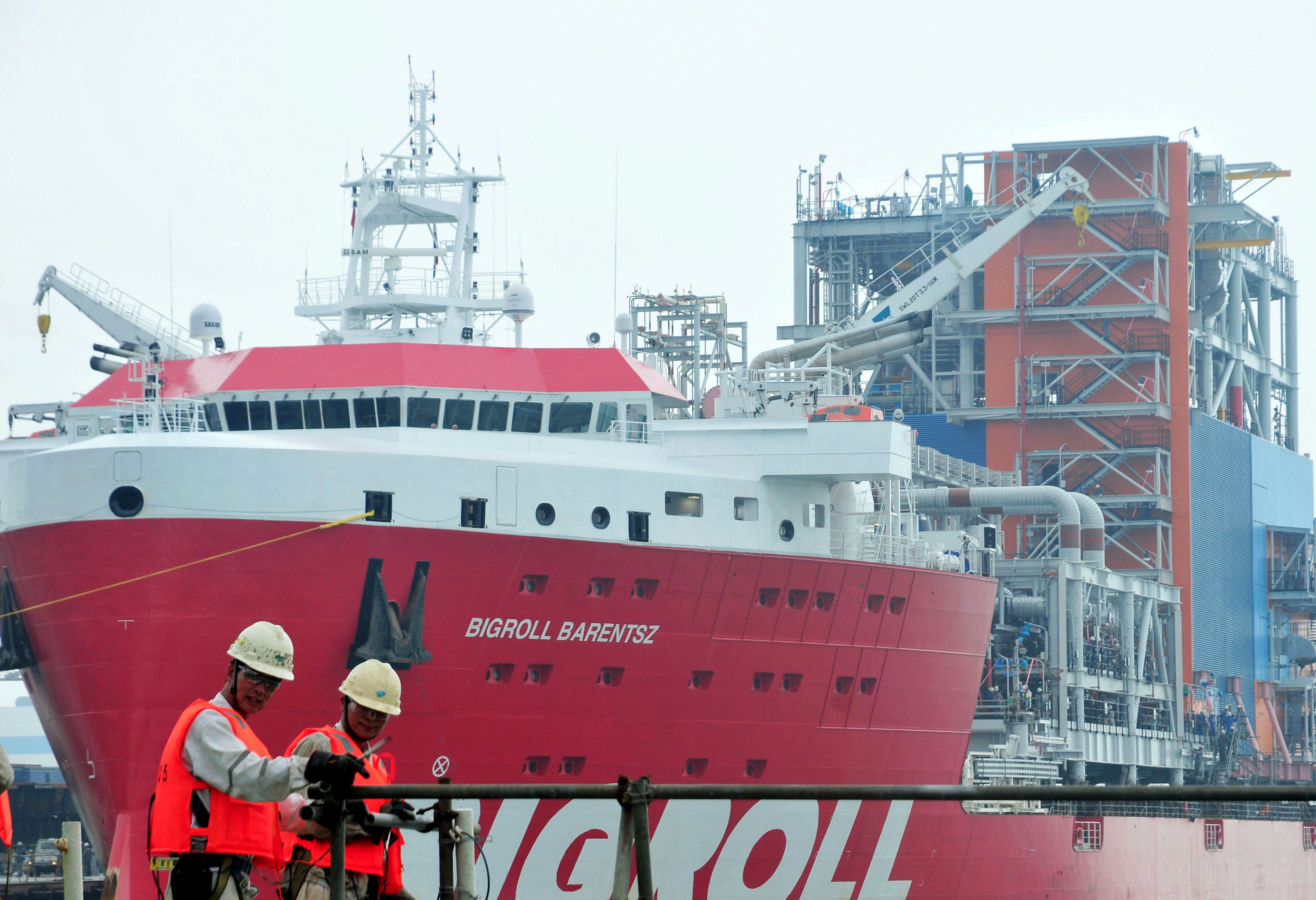
In return for its money and equipment, Asia will buy up a lot of Yamal LNG’s output. Initial reports stated that Russia would send the first gas from Yamal to China as a symbolic gesture, but it actually appears that the first sale has been made to a UK-based subsidiary of Malaysia’s Petronas. Marine Traffic also shows the vessel sailing not towards Asia, but rather to Denmark’s Port of Skagen. Saudi Arabia, too, will buy gas from Yamal, and the country’s energy minister reportedly spoke with Novatek’s owner about the possibility of investing in an additional nearby LNG project while attending the opening ceremony in Sabetta.
Still, China will be filling its pipes with gas from the Russian Arctic in due time. Once Yamal is fully operating in 2019, 4 million tons of LNG from Yamal are planned to be exported to China each year. The country’s government sees Yamal as its own success story, a view that clashes with the picture painted by Putin. Both Moscow and Beijing are eager to continue cooperation, though. Already, Honghua, a major global supplier of oil and gas rigs, accounts for 60% of Russia’s oil drilling equipment imports. In Sabetta, Russian energy ministers also noted that cooperation is “mutually beneficial,” as seen in this televised interview from China Global Television Network (in English). Whether Russia’s domestic policies in the Northern Sea Route will be beneficial for China, though, has yet to be seen.
Will it float?
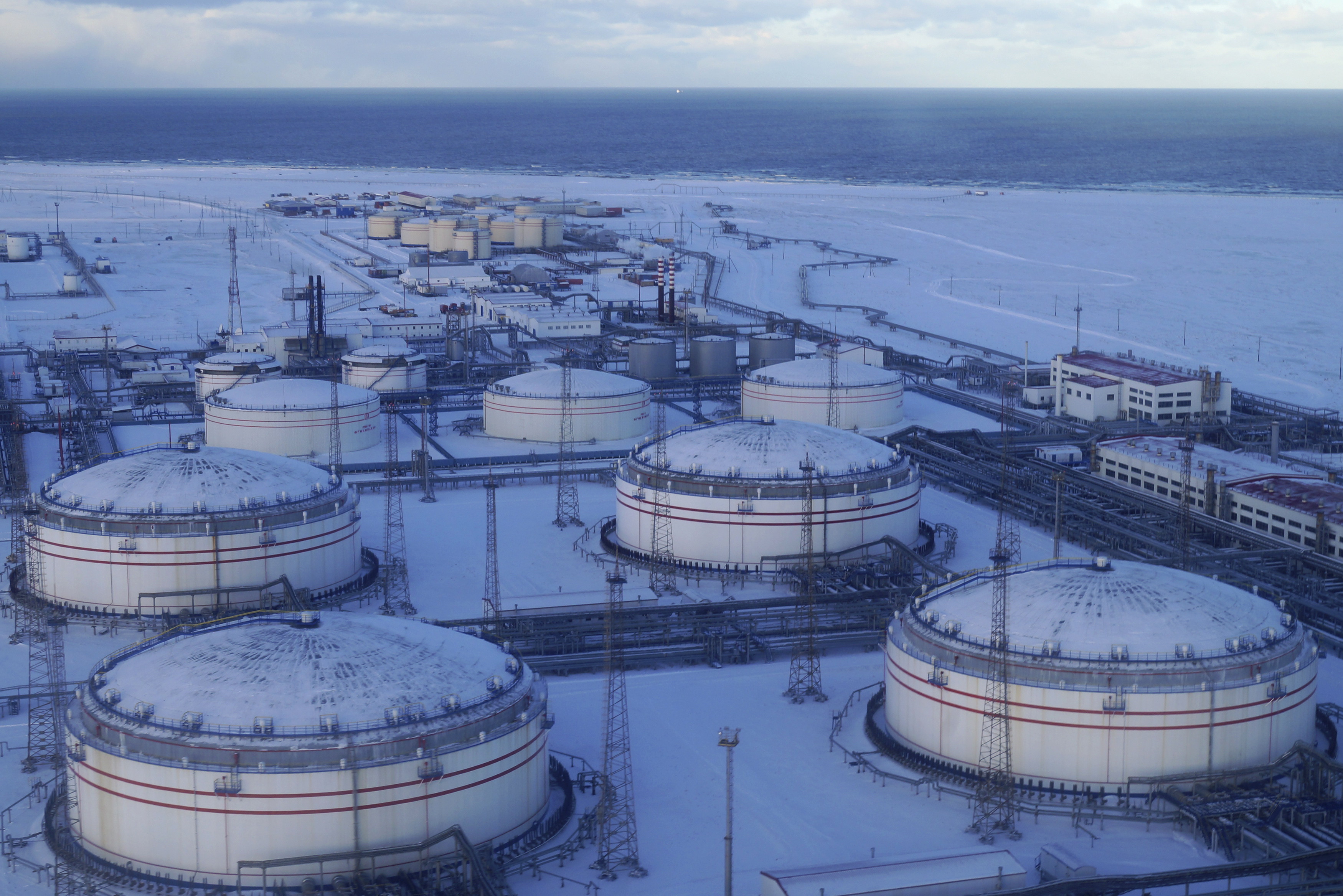
With Yamal’s launch, overnight, Russia has doubled the number of Arctic LNG projects worldwide. Prior to Friday, only Norway’s Snøhvit field off Hammerfest was exporting LNG from north of the Arctic Circle.
More gradually, Russia has become a serious exporter of Arctic oil. Bloomberg’s Julian Lee did the math to show that crude exports from Russia’s three Arctic terminals – Varandey, Prirazlomnoye, and Arctic Gate – reached nearly 400,000 barrels a day in November. That’s a hair under four percent of Russia’s total daily output, which has averaged over 10 million barrels a day this year.
Perhaps uncomfortably for Alaska, Russia’s Arctic oil production is approaching production levels on the North Slope. Last month, the American energy frontier produced a mere 466,000 barrels. Representing a mirror image of the trajectory of Russia’s Arctic oil, North Slope oil has has been steadily declining since the 1980s.
Biggest producer of Arctic oil and gas
In the coming months, Russia could well become the world’s biggest producer of Arctic oil and gas. Norway, the only other country besides the U.S. with active Arctic oil exploration, offers little competition for Russian Arctic crude. The Scandinavian country’s sole Arctic oil field, Goliat, with a production capacity of 100,000 barrels a day, has been beset by government-ordered shutdowns over worrisome issues like power outages and electrical safety risks.
Yet even as Russia inches closer to becoming the world leader in Arctic oil and gas, it’s worth remembering who is behind this evolution: not just Moscow, but also, among others, Beijing.
This post first appeared on Cryopolitics, an Arctic News and Analysis blog.
Related stories from around the North:
Canada: Arctic nickel, not oil, could soon power the world’s cars, Blog by Mia Bennett, Cryopolitics
Finland: U.S. pullout from Paris climate pact condemned by Finnish leaders, Yle News
Germany: Cheap oil from the Arctic? Fake news, says climate economist Kemfert, blog by Irene Quaile, Deutsche Welle
Norway: Statoil greenlights northernmost drilling project in Arctic Norway, The Independent Barents Observer
Russia: Foreign flagged tankers chart course for Russia’s new Arctic LNG plant in conflict with Kremlin policy, The Independent Barents Observer
Sweden: Sweden’s climate minister : U.S. withdrawal from Paris sends a bad signal, Radio Sweden
United States: Big questions emerge over $43 billion gas-export deal between Alaska and China, Alaska Dispatch News


